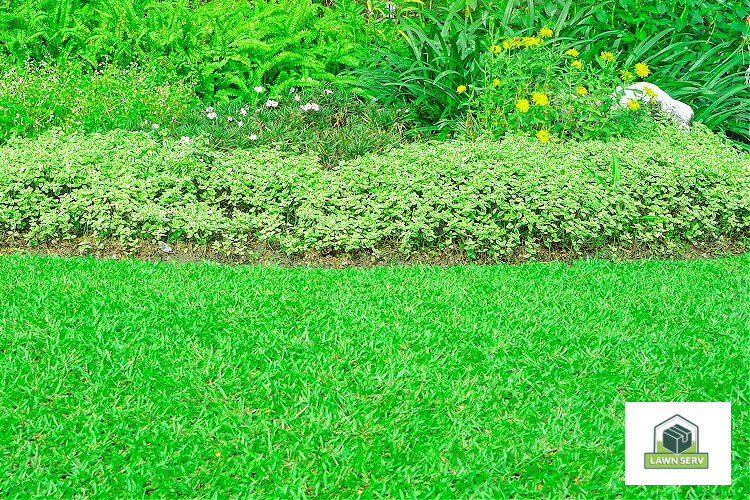
Have you ever gazed upon your uneven, fading lawn and thought to yourself, 'There must be a better way?' Well, have no fear - help is here! We've all been there before - that seemingly uphill battle with nature itself. It doesn't need to be so difficult.
Easy lawn care tips (DIY), anyone? Picture lush green grass underfoot as you enjoy a summer BBQ or watching the kids run wild on their own personal playground. With these straightforward tips up your sleeve, achieving this can become less of an elusive dream and more of reality!
We'll show you how understanding different grass types will help tailor care routines effectively. Discover why sharp mower blades are essential for healthier lawns and how soil testing can guide your fertilization strategy.
Are you set? Let's jump in and transform those gardening dreams into blooming realities! Stay with us, because it
Table Of Contents:
- Mowing Tips for a Healthy Lawn: It's More Than Just Cutting Grass
- Mastering Soil Testing and Fertilization
- Revamp Your Yard with Easy Lawn Care Tips (DIY)
- Watering and Irrigation Techniques: The Root of Lawn Care
- Revamp Your Yard with Easy Lawn Care Tips (DIY)
- Unpacking Seeding and Overseeding Tips
- Easy Lawn Care Tips for a Lush, Green Oasis
- FAQs in Relation to Easy Lawn Care Tips (Diy)
- Conclusion
Mowing Tips for a Healthy Lawn: It's More Than Just Cutting Grass
Have you ever considered the science behind mowing your lawn? It's not just a matter of cutting grass. Every detail counts when you're aiming for that perfect, lush green yard. From using sharp mower blades to setting the correct height on your lawn mower, there's more to it than meets the eye.
'Keeping your mower blade razor-sharp is like giving your grass a clean haircut. Dull blades tear up the turf and create openings for disease.'
The sharpness of your blades can be the distinction between a flourishing lawn and one that is affected by parasites and illnesses.
The Significance of Sharp Blades in Clipping Grass
You might be surprised by the amount of damage that dull mower blades can inflict on your yard. Instead of making clean cuts, they tear through the grass, leading to unsightly brown patches over time.
The solution is simple: keep those mower blades sharp. Not only will this result in cleaner cuts, but it will also reduce stress on each blade of grass, promoting healthier overall growth.
The Art of Setting the Correct Mowing Height
Mowing your lawn too short can starve it, while mowing it too high can leave you with an untidy meadow. That's why finding the right mowing height is crucial.
- For the ideal mowing height for your lawn, it is important to research what works best for your specific type of grass.
- Crowding Out Weeds Naturally - By allowing your lawn to grow longer, you create an environment where weed seeds struggle to establish themselves, leading to a healthier, weed-free lawn.
So the next time you're ready for some serious lawn mowing, remember that it's not just about cutting grass. It's an art.
Transform your garden into a lush haven by focusing on the nitty-gritty of mowing. Make sure your mower blades are razor-sharp for neat cuts and robust grass growth. Find that 'just right' mowing height, neither too short nor too long, customized to your lawn's needs. Bear in mind, effective mowing isn't simply about cutting grass;
Mastering Soil Testing and Fertilization

By comprehending the fundamentals of soil testing and fertilization, one can easily make strides towards achieving a healthy lawn. It's all about knowing the conditions of your soil.
1. Get Familiar with Soil Tests
You may be wondering how to address your lawn care problems and determine which nutrients are lacking or excessive in your yard. The answer is simple: perform a soil test.
Before applying any fertilizer or grass seed, it's important to conduct a comprehensive soil test. By performing a soil test regularly, you will be able to stay up-to-date on the health of your garden. It not only reveals fertility levels and pH balance but also indicates salt content, organic matter percentage, and soil texture.
The rule of thumb here is consistency – conducting regular tests every three years will keep you well-informed.
2. Implement Proper Fertilizer Application
To ensure that your lawn receives the nutrients it needs, let's delve deeper into using fertilizers based on specific soil conditions indicated by our convenient home-based tests.
- Your choice of fertilizer largely depends on the results of these tests. If they show high nitrogen levels but low phosphorus and potassium values, opting for a 4-1-2 blend would be ideal for fall season application, providing direct energy to feed the grass roots.
- Take note of any changes in composition so that adjustments can be made accordingly when planning future applications.
Remember, a healthy lawn starts beneath the surface, so start digging into those soils.
Revamp Your Yard with Easy Lawn Care Tips (DIY)
Maintaining a vibrant, green lawn requires more effort than one might think; weeds and pests must be managed to keep it healthy. More than you might think. A healthy lawn is an ecosystem in itself, with its own unique set of challenges - chief among them being weed control and pest management.
'An effective strategy against lawn weeds, such as crabgrass, involves applying a preemergence herbicide after the second mowing in spring.'
In essence, keeping your grass looking great isn't just about regular watering or fertilizing; it's also about taking proactive steps to prevent weed growth and manage pests effectively.
The Art of Weed Control: It's All About Timing.
Weed control is often seen as reactive – dealing with unwanted plants once they've sprouted. But experts know that prevention can be more efficient. This includes understanding when certain types of weeds are likely to germinate so you can stop their growth before it even starts.
- Treating your lawn early on with preemergence herbicides prevents seeds from developing into mature plants.
- Maintaining proper soil health discourages weed growth by making conditions less favorable for their development.
- Frequent mowing at the right height keeps many types of weeds under control by preventing them from flowering and spreading seeds around your yard.
Pest Management: An Ongoing Effort
Mulching, along with other organic methods, not only enriches soil but also deters many common pests. However, sometimes more targeted strategies are required.
Gaining knowledge of the kinds of bugs that can harm your yard and how they act is essential for controlling them effectively. Biological controls such as introducing natural predators into your garden might be a solution worth considering.
Remember, weed control and pest management aren't one-time tasks but ongoing efforts necessary for maintaining a healthy lawn.
Getting that dreamy, green lawn isn't just about watering and feeding it regularly. It's also about mastering the timing of weed control and keeping up with pest management. Start treating your yard early with preemergence herbicides, take care of its soil health, mow often at the correct height, enrich it organically through mulching, and introduce natural predators for biological balance.
Watering and Irrigation Techniques: The Root of Lawn Care

Your lawn's health depends on your watering strategies. Proper hydration promotes strong root growth, but the 'how,' 'when,' and 'frequency' can vary depending on the type of grass.
Not all grass species have the same watering needs. Cool-season grasses like Kentucky bluegrass may require more frequent watering compared to warm-season grasses like Bermuda or Zoysia.
To ensure your specific grass type thrives with healthy roots, consider reaching out to your local extension service or researching online for more information on their water preferences.
The Best Time to Quench Your Lawn's Thirst
Early morning watering is best, as it allows for better absorption and reduces evaporation, while avoiding the potential of diseases that can come with overnight moisture. This allows for better absorption while reducing evaporation. Avoid watering in the evening, as moisture overnight can invite diseases.
How Often Should You Water? How Deep?
Avoid daily sprinkling and instead aim for deeper yet less frequent irrigation sessions. This encourages roots to grow deeper, resulting in stronger and more resilient root systems. A good rule of thumb is to provide one inch of water per week, either from rainfall or manual irrigation. This practice is crucial for promoting healthy growth in various types of grass.
Revamp Your Yard with Easy Lawn Care Tips (DIY)
Is your lawn plagued by shady areas where grass refuses to grow? Don't fret, there's an answer for you. Dealing with shady areas can be a challenge, but with the right approach, you can transform them into lush, green oases. Let's dive into some easy lawn care tips to revitalize your yard.
'Why doesn't my usual turf thrive in these darker corners of the garden?'
In essence, conventional grass varieties are not well-suited for low-light conditions. However, there are shade-tolerant ground covers that can thrive in shady areas. Instead of battling against nature, let's work with her by choosing ground covers adapted for deep shade over traditional lawns.
- Picking the right plant: Not all plants are created equal when it comes to surviving under canopies or next to tall structures. Choose shade-tolerant species that can thrive in low-light conditions.
- Taking care: Maintenance matters too. Even shade-tolerant species have their own set of needs and preferences. Make sure to provide them with proper care, including watering and fertilization.
Replacing regular grass with shade-tolerant ground covers is a great step towards a greener lawn. However, these hardier alternatives still require some TLC. Nourish them with water and fertilizer, as they too enjoy a good drink despite their love for shadows.
Mulching around your new green carpet is another essential step. It helps retain moisture and keeps pesky weeds at bay, ensuring your shady lawn areas stay vibrant and healthy.
By following these easy lawn care tips, you can revamp your yard and create a lush, green oasis. Begin now and relish the magnificence of a well-groomed lawn.
Struggling with stubborn shady areas in your yard? Embrace the shade instead of fighting it. Swap out conventional grass for ground covers that love low-light conditions. Remember, they still need some TLC - water, fertilizer and mulch are their best friends. With these easy tips, you can transform those dark corners into a lush green haven.
Unpacking Seeding and Overseeding Tips

Picture this: you're standing in your yard, staring at a bald patch of grass. You've tried everything, but nothing seems to help it grow back. What if I said there's an effortless remedy? It's called overseeding.
Overseeding is the practice of adding new grass seed into an existing lawn - kind of like giving your yard a hair transplant. This not only helps prevent those pesky bald patches from appearing but also improves the overall look and health of your lawn.
The beauty about overseeding is that it can be tailored to suit any type of grass species. So whether you have cool-season or warm-season turf, there are suitable seeding options available for you.
The Why Behind Overseeding
Apart from preventing bare spots on your lawn, overseeding has other benefits too. When done right, it introduces newer varieties into older lawns which creates stronger turfs less prone to diseases. Plus with more grass growing, weeds find it harder to take over.
Picking The Right Time To Reseed
Finding the perfect time for overseed depends largely on what type of grass grow in your garden. If cool-season types such as Kentucky bluegrass or tall fescue dominate your yard then early fall is ideal – just when temperatures start dropping yet enough sunlight remains for seeds establish before winter sets in.
If Bermuda or Zoysia make up most part though (these being warm season varieties), late spring through early summer works best - post first mowing session when these grasses enter their active growth phase. But how often should you overseed? Once every year or two is typically sufficient, but this can vary depending on the health and type of your existing lawn.
Struggling with bald patches on your lawn? The answer might be as simple as overseeding. This practice involves introducing new grass seeds into your existing turf, creating a denser and healthier yard. It's not one-size-fits-all though - the best time for this green-thumb magic trick depends on whether you're dealing with cool-season or warm-season grass types.
Easy Lawn Care Tips for a Lush, Green Oasis
Revamp your yard with our easy lawn care tips (DIY). Master mowing, soil testing, fertilization, and more for a lush, green oasis. Dive in now.
1. Understand Your Grass Type
The first step in DIY lawn care is knowing what type of grass you have. Different types require different levels of care. For instance, Bermuda grass loves full sun exposure, while St Augustine prefers moderate shade. By understanding your turf needs, you ensure effective treatments and avoid wasting effort.
2. Prioritize Soil Health
A crucial part of maintaining a beautiful yard is focusing on soil health because it significantly impacts the overall health of your lawn. If the soil lacks essential nutrients or doesn't drain properly, even resilient turf species may struggle to thrive. Consider getting professional assistance from a service like Lawnserv to analyze soil nutrient levels, maintain proper pH balance, and add organic matter to improve soil quality and promote robust growth in your garden.
- Analyze Soil Nutrient Levels: Use a home testing kit or get professional assistance to identify any nutrient deficiencies that need fixing.
- Maintain Proper pH Balance: The ideal pH level varies depending on the grass type but generally falls between 6 and 7.
- Add Organic Matter: Compost or organic matter improves drainage, adds nutrients back into the soil, and promotes microbial activity, which helps keep lawns healthy.
3. Choose Appropriate Equipment
Your choice of equipment plays an integral role in executing regular maintenance tasks effectively. A reliable lawnmower, for instance, helps maintain uniform height across all patches, contributing to that perfect lush green appearance every homeowner desires. Consider your lawn size and grass type when selecting a mower. For larger lawns, gas or electric mowers are more efficient, while reel mowers work well for smaller yards. Regular maintenance of your equipment, including cleaning after use and sharpening blades as needed, ensures optimal performance.
Incorporating these easy lawn care tips into your routine will help you save time and effort while achieving professional-level results.
Green thumb or not, you can create a lush oasis in your backyard with our easy DIY lawn care tips. Know your grass type to provide the right care and focus on soil health for a thriving turf. Equip yourself with appropriate tools and remember - regular maintenance is key. A little effort goes a long way towards achieving that perfect green carpet.
FAQs in Relation to Easy Lawn Care Tips (Diy)
How do I take care of my lawn DIY?
Maintaining a healthy lawn involves regular mowing, proper watering, soil testing, and fertilization. Controlling weeds and pests also contributes to your yard's overall health.
How can I make my lawn nice without chemicals?
You can improve your lawn naturally by maintaining good mowing practices, optimizing irrigation techniques, adding organic compost for nutrients, and using physical weed control methods.
What can I put on my lawn to make it look better?
Apart from regular water and fertilizer application based on soil test results, overseeding bald patches with suitable grass seeds will enhance the appearance of your yard.
Should I put Epsom salt on my lawn?
Epsom salt is beneficial in small amounts as it provides magnesium sulfate that helps in seed germination and chlorophyll production but should not replace balanced fertilizers or lime treatments.
Conclusion
Revamping your lawn doesn't have to be a daunting task.
With easy lawn care tips (DIY), you can transform that patchy, fading green into a lush oasis.
The key is understanding the basics - like why sharp mower blades are essential for healthy grass growth and how setting the right mowing height can control weeds.
It's also about knowing when and how often to water different types of grass, and mastering soil testing to guide your fertilization strategy.
Weed control? Pest management? We've got those covered too.
If all this seems overwhelming or if you simply want more time enjoying your yard instead of maintaining it, Lawnserv is here to help.
We offer professional DIY lawn care services tailored specifically for your yard's needs.
Take advantage of our expertise in everything from mowing techniques, soil health, weed control strategies through irrigation practices.
Join us at Lawnserv, where we make achieving a beautiful yard simple! Let’s turn that dream green space into reality together!


